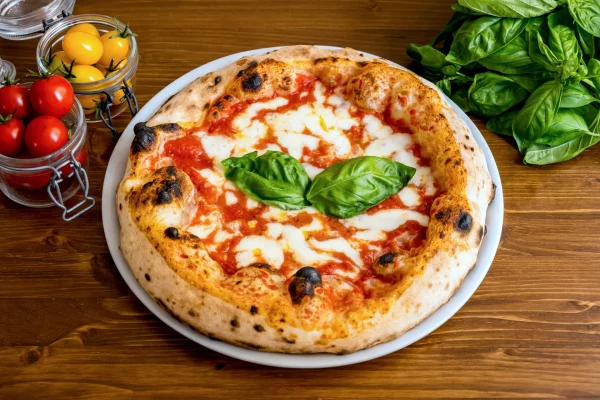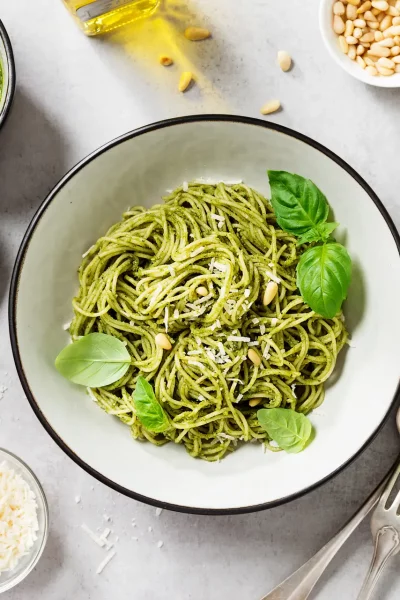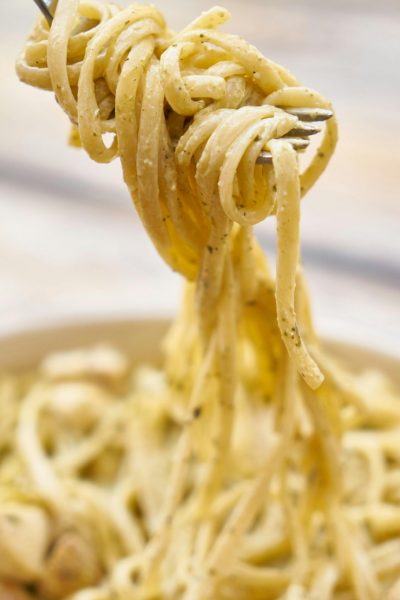The 10 Specialties of Rome to try during your Stay !

We believe you simply can’t leave Rome without tasting its authentic cuisine—an experience that will leave you with lasting memories. The landscapes, the history, and the diversity of Rome are also revealed through the palate. And we won’t need to work hard to convince you: planning a trip to Italy means looking forward to all the pleasures that await.
Think of a plate of fresh pasta sprinkled with pecorino and drizzled with olive oil, or a crispy, colourful pizza al taglio topped with seasonal vegetables. Then there are the bite-sized treats enjoyed on the go, or the famous artisanal gelato savoured between two visits… Rome offers an experience that delights all the senses and satisfies every appetite.
In this article, we invite you to explore the must-try culinary specialities of Rome during your stay. Why not shop at a local Roman market and prepare a traditional Italian meal yourself ? Discover our list of the best restaurants in Rome, the most authentic places to enjoy true Italian dishes, our favourite Osterie and Trattorie—and of course, don’t miss our elegant Street Food Tours !


Every guide will tell you : don’t leave Rome without trying the local specialties.
What characterises traditional Roman cuisine and what is its origin ?
If you go to a traditional osteria (see our addresses), the content of your plate should not only delight you but also tell you the geography, and the history of Rome.
From ancient and traditional Roman cuisine to street food, what are Rome’s specialties not to be missed ?
Primi piatti : Iconic Roman Pasta Dishes.
In a traditional Italian meal, we begin with the “primi piatti”—the first courses—most often featuring pasta. And in Rome, pasta isn’t just a dish—it’s part of the city’s soul. Some pasta varieties are true Roman treasures. If you’d like to take a bit of Rome home with you, look for bucatini in local grocery shops. Their name comes from bucato, meaning “pierced”—they’re long, hollow spaghetti and a symbol of the Lazio region. This list of pasta dishes reflects the variety and generosity of Roman cuisine. Whether you’re a meat lover, a vegetarian, a street food fan, or a gourmet foodie, there’s something for everyone. In restaurants, you’ll find classic Roman sauces like Carbonara or Amatriciana, both typically made with guanciale, a delicacy from pork cheek. Rome lies in the Lazio region, close to the mountains of Abruzzo, Tuscany, and Umbria—all regions rich in fertile land. Shepherds once travelled from these areas to Rome to sell their livestock and cheeses, such as pecorino and ricotta. Their simple, hearty dishes helped shape what we now know as traditional Roman cuisine. It’s a rustic, earthy food culture, rooted in seasonal ingredients and peasant traditions—now at the heart of what we recognise as typical Italian cuisine. Rome is also a city of migration and exchange, and its cuisine reflects this beautifully. Many iconic dishes come from the ancient Jewish community in the Ghetto neighbourhood, while Neapolitan immigrants brought their beloved pizza to the capital. And of course, the Roman table is a legacy of antiquity itself—think rich sauces, bold condiments, and a deep-rooted wine culture. There are plenty of good reasons to combine your culinary adventures with a visit to Ancient Rome on your next trip. To help you do just that, we’ve created a special itinerary: “Ancient Rome and Traditional Italian Cuisine.”
Because after learning the theory—it’s time to taste it !
1. Cacio e Pepe : eat like a shepherd !
A must-have Rome specialty, the Cacio e Pepe pasta recipe (“Pecorino Romano and Pepper Cheese”) stands out for its subtle simplicity and its ancient and typically Roman history.
It consists of 3 ingredients : pasta (tonnarelli), pecorino romano and black pepper. The shepherds of the surrounding countryside carried pecorino cheese, pepper and dry pasta to Rome… Enough to provide them with enough energy to accompany their long walk to the city. (and enough energy to travel through Rome today !).
In any good trattoria, you will also find pasta alla Gricia, equally traditional since it consists simply of guanciale (dried pork cheek), and pecorino romano.
2. Gnocchi alla romana : typically Roman !
Although original, these Gnocchi alla romana have everything to please you. You will recognize them by their disc shape. Unlike classic potato gnocchi, they are made of semolina, as well as a butter sauce, cheese and nutmeg.
3. Carbonara, the famous
This is a sensitive topic : “What is the real recipe for carbonara pasta ?” You would not want to commit a culinary crime during your stay in Rome ! The answer is simple : no, the traditional Italian recipe for carbonara does not include cream. But simply raw egg, guanciale, pecorino romano and pepper. That’s all !
4. Amatriciana
Let’s say it right away, the pasta all’amatriciana comes from the town of Amatrice in the province of Rieti, close to Abruzzo, but remains a classic of the gastronomy of Rome. In its contemporary version, the sauce all’amatriciana that accompanies bucatini is composed of tomato, pepper, onions, olive oil, guanciale or pancetta. In the vegetarian version, opt for pasta all’Arrabbiata, based on tomato sauce with Italian pepper.
The vegetable feast : Rome’s vegetable specialities
The most ancient and traditional recipes of Rome are most often vegetarian, based on vegetables typical of the lands of Lazio and seasonal. Among them, the king is the carciofo (artichoke), which comes in several versions. In Rome, you will even find it on pizza.
5. Carciofi alla Romana and carciofi alla Giudia, emblematic !
Artichoke lovers will not be disappointed with the trip, since Italy, and the Rome region in particular, is the world’s leading producer of the artichoke. Not far from Rome, the city of Ladispoli is famous for its artichoke festival which takes place every year in April, at harvest time. You will not be surprised to find artichoke cooked in many sauces in Rome. You can even buy Romaneschi artichokes at the market stalls in spring. And if there is a specialty of Rome to discover, it is a dish based on artichokes such as the ancestral carciofo alla Giudia or carciofi alla Romana.
– Carciofo alla Giudia, Jewish-style artichokes
The Jewish community in Rome is one of the oldest in Europe. Established on the banks of the River Tiber in the historic Ghetto district, the Jews of Rome contributed greatly to the Roman culinary heritage. Jewish women cooked artichokes especially on the occasion of Passover (Easter). Today, carciofo alla Giudia is Rome’s oldest and most emblematic specialty of this Jewish heritage. We strongly recommend that you take advantage of your visit to the Ghetto district to taste fried artichokes with olive oil.
– Carciofi alla Romana, the Roman artichoke
What could be more typical of Roman cuisine than Roman artichokes ? Garnished with herbs (parsley, garlic, pepper, marjoram, etc.) and roasted, artichokes are tender and tasty. Look for the artichoke and you will also find it in braised form with the fritto di Carciofi, or as an accompaniment to meats, especially with lamb and Abbacchio alla romana.
6. Do you know Puntarelle ?
Little known in France, puntarelle resembles chicory and is harvested at the beginning of winter and is particularly popular in Rome. With its slightly bitter taste, it can be eaten raw or cooked, and you will often find it served in restaurants in salad accompanied by anchovies, olive oil and white vinegar and salt. Puntarelle salad will be welcome to offer you a detox break between pasta, meats and desserts. Puntarella, known for its digestive and vitamin virtues, is often consumed by Italians during the holiday season. Vegetarians or lovers of vegetables cooked in the Italian style, will be delighted with bean salads or fiori di zucca, breaded zucchini flowers.
Rome specialities for meat lovers
Meat is a matter of choice in the popular cuisine of Rome ! For more than 2.500 years, shepherds from the area came to Rome with their herds. Lamb has been served in all Roman restaurants. Pecorino, ubiquitous, or ricotta made from goat’s milk (you can also find cow’s milk ricotta, less tasty). Although it is less popular today, offal remains very widespread in Roman cuisine. Traditionally, the butchers of the former slaughterhouses located in the heart of Testaccio sold the “fifth quarter” (tripe, tail, heart, and offal) to the trattorias in the area. Today, take a look at these same slaughterhouses converted into a place of exhibitions and artistic performances (annex of the museum MACRO) !
7. Abbacchio alla Scottadito, to enjoy with your fingertips !
Grilled lamb chops, or roasted lamb (abbacchio al forno) are evidence of Rome’s ancient pastoral culture. Abbacchio alla Scottadito is a typical Italian dish of small grilled lamb chops flavoured with thyme, rosemary, tarragon, and olive oil. You can eat it with your fingertips with a drizzle of lemon.
8. Coda alla Vaccinara, for the bold
If you are thirsty for knowledge in terms of traditional Roman cuisine then you should try the Coda alla Vaccinara ! Unless you are allergic to oxtail, this typical Rome dish is well worth a visit. It is a braised beef stew served with vegetables and a flavoured sauce (wine, celery, herbs, onion, garlic, cinnamon, etc.). Try the Saltimbocca alla Romana: also a Rome specialty, the Saltimbocca (“jump in the mouth”) is made up of fine beef fillets wrapped in ham and sage leaves. Special mention for fans of offal (not to be confused with the rock band. Don’t miss the Trippa alla romana !
Street Food in Rome
In Italy, and Rome in particular, street food is unique, with specialities that you won’t find anywhere else. You can find them on every street corner. Bakeries (forno or panetteria), markets (we recommend the Mercato Trionfale), pizzas al taglio and so much more.
Street food in Rome is a fun way to walk around Rome while tasting these culinary wonders, and it is not limited to eating pizza (read our article on the best pizzas in Rome) or for people with low budgets…
In the street, of course, you’ll have no trouble finding small, open and specialised shops, in local bakeries and in Rome’s markets! In our top 10 specialities to try in Rome, we devoted a few lines to the irresistible Suppli, Rome’s arancini, which you can try at “Supplizio”, or the Trapizzino, this ingenious hybrid of sandwich and pizza, which you can find at Trapizzino in Trastevere, Testaccio or at Termini station.
9. Suppli, Trapizzino…
If you don’t know them yet, you have probably already seen them and you will certainly love them ! In Rome, you just have to keep an eye out for the famous torture… In the snack cafés, pizzerias, bakeries, markets in Rome and dedicated stores such as the Supplizio in the city centre (Via dei Banchi Vecchi, 143). Close to the Sicilian arancini, suppli are a gourmet and inexpensive Rome specialty, to eat on the go ! True ambassadors of street food in Rome, the supplìs are breaded croquettes of tomato risotto with a heart of mozzarella… If you salivate in advance, so do we : that’s why we created this street food route in Rome where you discover the best local addresses to explore this typical Roman street cuisine ! The Trapizzino brand for example, has not finished making followers, so that it can be found in several neighbourhoods of Rome (Trastevere, Testaccio, the market of the station Termini). Trapizzino is an ingenious mix of two Roman traditions: tramezzino (the Italian sandwich) and pizza (hence the name). Recognizable by its triangular-shaped pastry served as a cone, the trapizzino is filled with fillings as delicious as varied, and respectful of traditional Roman recipes. These include burrata, mozzarella, chicken, peppers and anchovies, Roman-style oxtail… Chances are your first trapizzino won’t be your last !
10. Pizza alla romana : an ode to simplicity
Its particularity : its white dough, very fine and crispy based on yeast. Coated with olive oil, the dough is baked and sprinkled with oregano, simply ! It is often served as an aperitivo.
And what about the desserts, the gourmands will ask ?
We suggest you test our best ice cream addresses in Rome as we French love Italian ice cream ! But Rome also has dessert specialties, such as Maritozzo, the most gourmet dessert, the oldest and most unusual in Rome, since it dates from Ancient Rome ! This is a generous brioche topped with whipped cream. It is also a very romantic dessert, “maritozzo” referring to the future spouses, the pastry offered by the future husband to his bride (who hid an engagement ring in whipped cream… you will not be surprised by the size of the brioche)
If you have “checked” the 10 points of this list and tested the most typical Roman specialties, you can boast of having eaten like a Roman ! And you may need to work out a little between feasts… To earn your next Carbonara. That’s why we advise you to visit Rome by running or cycling !







